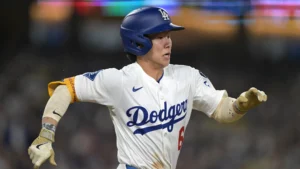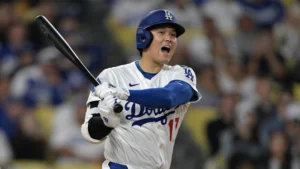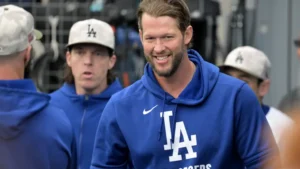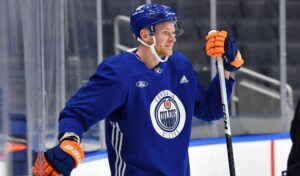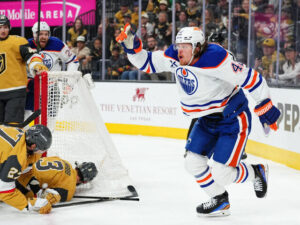
Orioles Must Consider Trading Veteran Infielder to AL Rival Amidst Losing Season
The Baltimore Orioles’ 2025 season, once full of promise and championship hopes, has taken a sharp downturn. A team that soared to 101 wins just two years ago now finds itself languishing in the AL East standings. With injuries piling up, the bullpen regressing, and offensive inconsistency plaguing the roster, the Orioles have slipped below .500 and fallen well out of playoff contention.
While there’s still a long season ahead, front office leadership must face a difficult but necessary reality: it’s time to consider selling off veteran assets—and that begins with trading veteran infielder Ramón Urías.
The 30-year-old has been a utility staple for Baltimore over the past few seasons, playing solid defense across the infield and offering occasional pop at the plate. But with young talent like Jackson Holliday, Joey Ortiz, and Coby Mayo waiting in the wings or already breaking through, the Orioles must now prioritize development over sentiment. Trading Urías to a contender—particularly an AL rival in desperate need of infield help—makes both strategic and financial sense.
A Changing Landscape in Baltimore
Baltimore’s resurgence from bottom-dweller to playoff contender over the last few years was driven largely by an elite farm system and homegrown stars. Adley Rutschman, Gunnar Henderson, and Grayson Rodriguez helped spearhead a youth movement that revitalized the franchise.
But 2025 has exposed the team’s growing pains and areas of regression. As of mid-May, the Orioles are hovering near the bottom of the division, struggling to keep pace with the Yankees and Blue Jays. Offseason additions have underperformed. The bullpen, a strength in 2023 and 2024, has collapsed under the weight of injuries and overuse. The rotation remains inconsistent outside of Rodríguez.
The front office, led by GM Mike Elias, has always emphasized sustainability and flexibility. Given the team’s current trajectory, it would be foolish not to capitalize on players like Urías while they still have value—especially with his contract expiring after 2025 and arbitration eligibility looming.
Why Ramón Urías Is the Ideal Trade Candidate
Urías won a Gold Glove at third base in 2022 and has remained a steady presence since. He can play second, third, or shortstop with above-average defense, making him one of the more versatile infielders available on the trade market. While his bat has cooled somewhat, he’s still a capable .250–.260 hitter with sneaky pop and excellent situational awareness.
In a contender’s dugout, Urías isn’t expected to be a star—he’s the ideal complementary piece. He can step in due to injury, spell a struggling starter, and provide reliable depth for a postseason run.
His 2025 stats so far (as of May):
- Batting average: .254
- Home runs: 4
- RBIs: 18
- OPS: .722
- Defensive WAR: +0.8
These aren’t jaw-dropping numbers, but they’re more than serviceable for a team looking to bolster its bench and depth chart.
Potential AL Suitors for Urías
Several American League teams fit the mold of a potential buyer looking for a flexible veteran infielder. Let’s break down the three most likely candidates:
1. Toronto Blue Jays
With Matt Chapman gone and internal replacements struggling, the Jays have a glaring hole at third base. Urías could either slot into that role or platoon with Santiago Espinal and Isiah Kiner-Falefa. Toronto has the offense and rotation to make a postseason push, but their infield depth is razor thin.
Given that the Orioles and Jays are AL East rivals, this would be a bold intra-division move—but not unprecedented. If Toronto offers a high-upside pitching prospect or bullpen arm, Elias might be willing to make the deal.
2. Minnesota Twins
Minnesota has underwhelmed in the AL Central, in part due to injuries to their infield core. With Jorge Polanco’s status uncertain and Carlos Correa fighting through nagging ailments, Urías could immediately fill in at second or third base. His glove-first approach fits the Twins’ defensive-minded strategy.
The Twins also have a handful of young relievers and Double-A starters that could interest Baltimore, who desperately need pitching reinforcements at all levels.
3. Seattle Mariners
Seattle is another underperforming team with wild card aspirations. Their offense ranks near the bottom of the AL, particularly at second and third base. Adding Urías wouldn’t solve all their problems, but he’d give them a stable, dependable option and allow them to shift some internal pieces around.
The Mariners also have one of the deepest farm systems in baseball, especially in pitching. Baltimore could easily target a controllable arm or a near-MLB-ready reliever in return.
What Could the Orioles Get in Return?
Urías won’t net a top-50 prospect, but he could yield a solid return that addresses key needs. Baltimore should be targeting:
- Mid-tier pitching prospects
- MLB-ready bullpen arms
- International bonus pool money
- Utility players with minor league options
For instance, if the trade partner is the Blue Jays, a deal might look like:
Orioles trade: Ramón Urías
Blue Jays trade: RHP Chad Dallas (Double-A), cash considerations
Dallas, a promising 23-year-old with a mid-90s fastball and plus slider, fits Baltimore’s mold: high-upside, controllable, and near the majors.
Alternatively, Seattle might offer a reliever like Prelander Berroa or a utility prospect like Ryan Bliss—both of whom could contribute quickly at Camden Yards.
Making Room for the Youth Movement
Trading Urías also clears a logjam in the infield. Jackson Holliday is the crown jewel of Baltimore’s system and needs consistent reps. So does Coby Mayo, who’s slugging his way into consideration. Joey Ortiz, acquired in the Corbin Burnes deal, is also pushing for playing time.
Continuing to allocate starts to Urías, when the team isn’t competing for a playoff spot, only delays the evaluation process for these future stars.
Projected Infield Post-Trade:
- 1B: Ryan Mountcastle
- 2B: Jackson Holliday
- SS: Gunnar Henderson
- 3B: Coby Mayo
- UTIL: Joey Ortiz, Jordan Westburg
That’s a youthful, cost-controlled infield with immense upside—and one that needs game reps now.
Clubhouse Chemistry vs. Long-Term Vision
No one questions Urías’ value in the clubhouse. He’s respected, well-liked, and a quiet leader. But in baseball, tough decisions must be made in the name of progress. Trading a beloved veteran can rattle the locker room—but it can also send a message: the team is committed to building a sustainable contender.
And there’s no indication that Urías would object to a move. On the contrary, he might welcome a chance to compete for a playoff spot in 2025.
When Should the Orioles Make the Move?
The MLB trade deadline is July 31, but smart front offices act early. A preemptive June trade could give the Orioles the best return, before other infielders flood the market. It would also allow more runway for Holliday and Mayo to adjust to everyday MLB play.
Key Dates to Watch:
- June 15 – MLB teams reassess farm system promotions
- July 1 – All-Star selections announced (could increase Urías’ trade value if he heats up)
- July 31 – Trade deadline
The Fan Base Reaction: Bitter Pill or Necessary Medicine?
Orioles fans are passionate, loyal, and knowledgeable. They understand the team’s arc—from cellar-dweller to contender—and most will recognize that trading Urías is not a sign of surrender, but a recalibration.
It’s also worth noting that fans are eager to see more of Holliday, Mayo, and Ortiz. A clear commitment to this youth movement, even at the cost of some short-term discomfort, is likely to be well-received in the long run.
Play the Long Game
Ramón Urías has done everything the Orioles asked of him—and more. He’s contributed with his glove, his bat, and his presence in the clubhouse. But with Baltimore’s window shifting from “open now” to “building for sustained excellence,” tough calls must be made.
Trading Urías to an AL rival isn’t about waving a white flag—it’s about turning the page. It’s about giving the next generation their shot, stocking the system with more pitching, and staying flexible for 2026 and beyond.
Baltimore has one of the best cores in baseball. Now they must make sure the pieces around that core align with the future—not the past.
